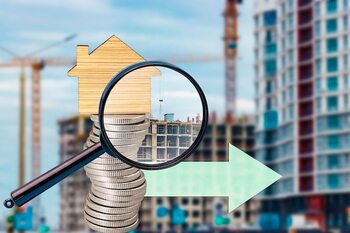The influence of infrastructure on the value of your property

Infrastructure is a fundamental pillar that directly impacts the value of any property, whether in rural or urban areas. Understanding how factors like access to roads, utilities, and transport affect appreciation will allow you to make more informed decisions when buying or selling your property. In this article, we will explore the key differences between the influence of infrastructure in rural and urban environments, revealing why each location has its own advantages and disadvantages. Get ready to discover how to maximize the value of your property based on its context.
The importance of access to roads in urban areas
Access to roads in urban areas is a crucial factor that influences property valuation. A good road network not only facilitates the mobility of residents but also improves access to essential services such as schools, hospitals, and shops. Properties located near major thoroughfares tend to be more attractive to buyers, as they offer greater convenience and connectivity. This translates into higher demand, which in turn can increase the property's value over time. Additionally, good road infrastructure contributes to the overall perception of the neighborhood, making it seen as a desirable place to live.
On the other hand, the condition and maintenance of the roads also play a significant role in this context. Well-maintained roads not only ensure safe and efficient transit but also reflect the local administration's commitment to urban development. In contrast, areas with deteriorated or poorly designed roads can discourage potential buyers and investors, negatively affecting the value of surrounding properties. Therefore, if you are considering buying or selling your property in an urban area, evaluating the road infrastructure should be an essential priority in your decision-making process.
2. Public services: What are the differences between rural and urban areas?
Public services are a crucial aspect that varies significantly between rural and urban areas, directly affecting property value. In urban areas, the availability of services such as potable water, electricity, sewage, and access to high-speed internet is often more widespread and reliable. This infrastructure tends to attract buyers looking for convenience and connectivity, which can significantly increase property values in these environments. Additionally, competition in urban markets encourages developers to invest in constant improvements, further raising the standard of living and commercial appeal.
On the other hand, in rural areas, although public services may be limited or less accessible, there is a growing trend towards self-sufficiency and the use of renewable energy. Many rural properties are beginning to incorporate alternative systems such as solar panels or wells for water supply. However, this lack of conventional infrastructure can pose a challenge for some potential buyers who prefer the comforts of an urban environment. It is essential to consider these differences when evaluating a rural property versus an urban one; understanding how the available services impact both lifestyle and property valuation will help owners maximize their investment according to their specific needs.
3. Impact of public transportation on the appreciation of urban properties
Public transportation is a crucial factor in the appreciation of urban properties, as its availability and quality directly impact the perception of convenience and accessibility. Areas with an efficient transportation system, such as metro, buses, or trams, tend to be more attractive to potential buyers. This translates into higher demand for properties near these facilities, which in turn drives up real estate values. Proximity to public transportation not only facilitates the daily commute of residents but also opens opportunities for those seeking rental investments, given the steady flow of people using these services.
Additionally, improvements in public transportation infrastructure are often accompanied by complementary developments in the area, such as new shops, restaurants, and recreational spaces. This synergy can transform entire neighborhoods and increase their overall appeal. For example, when a new subway line or an expansion of bus service is announced in a previously less regarded area, it is common to see an immediate uptick in local real estate investment. Therefore, when assessing the potential value of an urban property, it is essential to consider not only the immediate location in relation to public transportation but also how it integrates within the broader urban context and its future projections.
4. Educational infrastructure: a key factor for families
Educational infrastructure is an essential aspect for families when considering the purchase of a property. Proximity to quality schools, universities, and vocational training centers not only provides convenience but also translates into significant added value for the property. Parents often seek locations that offer suitable educational options, which increases demand in areas where these institutions are accessible. Moreover, good educational infrastructure can serve as an indicator of a prosperous community committed to the personal and professional development of its residents.
The positive impact of educational infrastructure on property value is especially evident in family neighborhoods. Homes located near well-rated schools tend to maintain their value and may even experience significant price increases over time. This phenomenon is relevant not only for those planning to settle long-term but also for investors looking for properties with high demand. In summary, the quality and accessibility of educational institutions are determining factors that can decisively influence the buying decision, thus making educational infrastructure a key ally in maximizing the value of your property.
5. Recreational spaces: how they influence home value
Recreational spaces are a crucial factor in property valuation, as they provide residents with places for leisure and social interaction. Parks, sports areas, and entertainment zones not only enhance the quality of life for residents but also help create a sense of community. Families often seek homes close to these spaces, which can increase demand and, consequently, the property's value. A neighborhood with abundant recreational options tends to be more attractive to potential buyers and renters.
Additionally, the presence of recreational facilities can influence purchasing decisions by providing opportunities for outdoor activities and sports. This is especially relevant in urban environments where space may be limited; having nearby parks or sports centers becomes a valued luxury. On the other hand, the lack of these amenities can cause a property to lose value or be less competitive in the market. Thus, promoting the development and maintenance of recreational spaces translates not only into community well-being but also into a smart investment for homeowners looking to maximize the value of their property.
6. Internet connectivity as a differentiating factor
Internet connectivity has become an essential element that can make a difference in the value of a property. In an increasingly digitalized world, the availability of a good internet connection not only influences the quality of life of residents but has also transformed into a decisive factor for buyers and renters. In urban areas, where the demand for spaces that offer fast connectivity is high, properties with access to high-speed internet typically experience a significant appreciation in their value. This is especially relevant for professionals who work from home or students who require digital resources for their education.
On the other hand, in rural areas, internet connectivity can be a key distinguishing factor that attracts new residents interested in enjoying a quieter lifestyle without giving up modern technology. Properties located in areas where investments have been made to improve digital infrastructure may see their market expand significantly. As more people seek to escape urban hustle and settle in less populated areas, reliable internet access becomes an indispensable attraction that can increase the commercial value of the property. Thus, in both urban and rural contexts, ensuring a good internet connection not only improves quality of life but also enhances the economic potential of any property.
7. Development projects: how do they affect the perception of the area?
Development projects, such as the construction of new housing, shopping centers, or parks, can radically transform the perception of an area. When a major project is announced, residents and potential buyers often associate these changes with modernization and economic growth. This can result in increased demand for properties in the area, which in turn drives up the value of the local real estate market. The perception of safety and well-being can also improve, as investments in infrastructure are often accompanied by enhancements in public services and community spaces.
However, not all projects have a positive impact. While some developments can revitalize a neighborhood, others may be perceived as intrusive or destabilizing. For example, the construction of large commercial complexes can alter the local dynamics and make residents feel that their quality of life is threatened by increased traffic or the loss of green spaces. In this sense, it is essential to analyze how each project affects not only the monetary value of the surrounding properties but also the overall perception of the area by its inhabitants and future buyers. An appropriate balance between development and infrastructure can ensure that a community not only grows economically but also maintains its essence and appeal for its residents.
8. Security and its relationship with local infrastructure
Safety is a crucial aspect that significantly interrelates with local infrastructure and, in turn, influences property values. In urban areas, well-designed infrastructure, which includes adequate lighting, surveillance, and accessibility to emergency services, can reduce the perception of risk among potential buyers. For example, a neighborhood where public safety programs have been implemented and streets are well-lit tends to attract families and professionals seeking a safe living environment. This positive perception not only improves the quality of life for its residents but also elevates the real estate market price in the area.
In contrast, rural areas may face unique challenges in terms of security and infrastructure. The distance to urban centers can limit access to essential services such as hospitals or police stations, which could raise concerns about emergency response times. However, these locations often offer a quieter and less densely populated environment, which is also appealing to certain buyers. The key lies in how these factors are managed; a rural community that invests in improving its infrastructure and security systems can significantly increase its attractiveness and perceived value. Thus, understanding this relationship between security and infrastructure is fundamental to maximizing the value of any property based on the local context.
9. Current trends: where is the future of the real estate market?
The evolution of the real estate market is closely linked to infrastructure trends. In an increasingly interconnected world, the demand for well-located housing near essential services such as public transport, schools, and shopping centers continues to grow. Areas with sustainable developments, such as eco-friendly buildings and attractive public spaces, are gaining popularity among buyers. This shift in preferences not only elevates the value of these properties but also promotes a more conscious lifestyle connected to the environment.
Additionally, technology is revolutionizing the way infrastructure is evaluated and valued in the real estate sector. The use of big data and predictive analytics enables investors to identify emerging areas that may experience a significant increase in their long-term valuation. For example, the development of new transport lines or the implementation of smart technologies in neighborhoods are transforming previously less desirable areas into real estate hotspots. Understanding these trends will allow you to anticipate the future of the market and make strategic decisions to maximize your investment.



